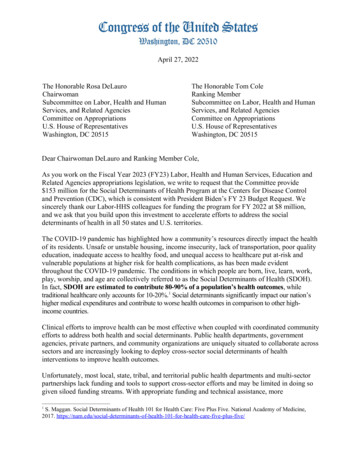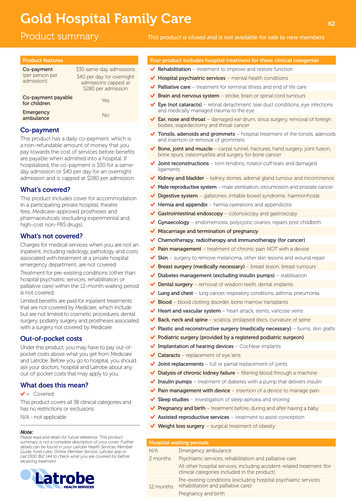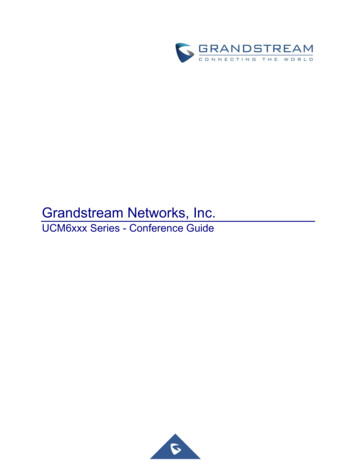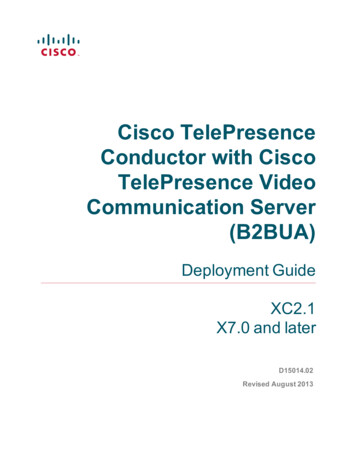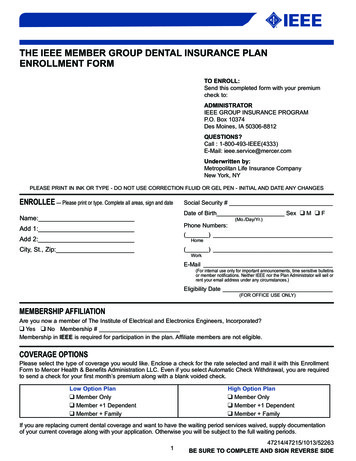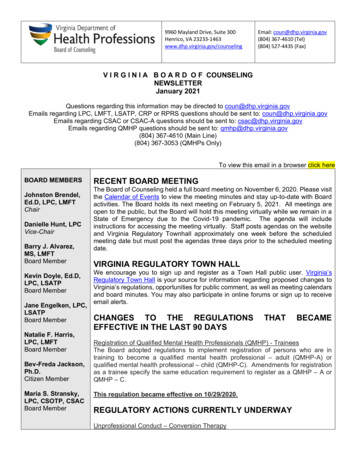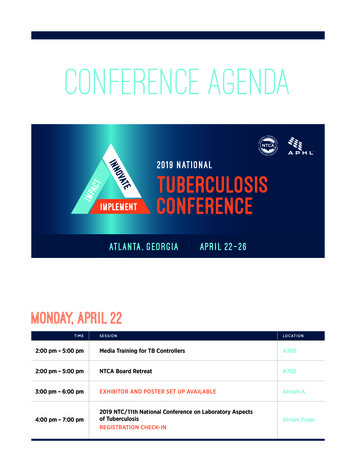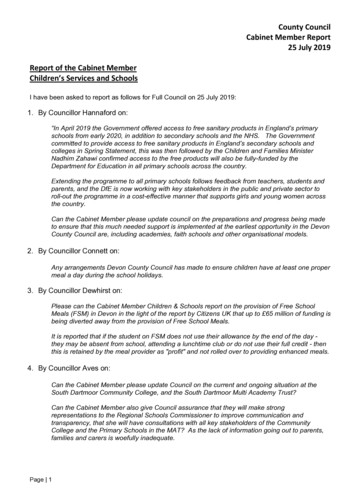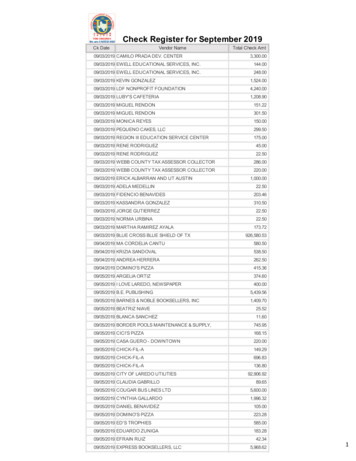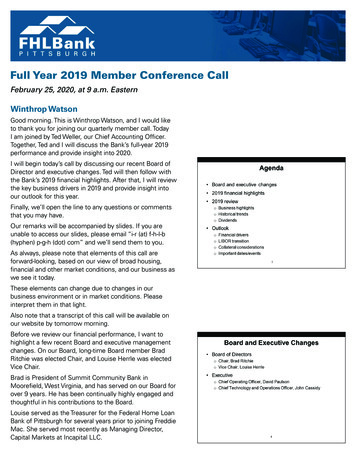
Transcription
Full Year 2019 Member Conference CallFebruary 25, 2020, at 9 a.m. EasternWinthrop WatsonGood morning. This is Winthrop Watson, and I would liketo thank you for joining our quarterly member call. TodayI am joined by Ted Weller, our Chief Accounting Officer.Together, Ted and I will discuss the Bank’s full-year 2019performance and provide insight into 2020.I will begin today’s call by discussing our recent Board ofDirector and executive changes. Ted will then follow withthe Bank’s 2019 financial highlights. After that, I will reviewthe key business drivers in 2019 and provide insight intoour outlook for this year.Finally, we’ll open the line to any questions or commentsthat you may have.Our remarks will be accompanied by slides. If you areunable to access our slides, please email “i-r (at) f-h-l-b(hyphen) p-g-h (dot) com” and we’ll send them to you.As always, please note that elements of this call areforward-looking, based on our view of broad housing,financial and other market conditions, and our business aswe see it today.These elements can change due to changes in ourbusiness environment or in market conditions. Pleaseinterpret them in that light.Also note that a transcript of this call will be available onour website by tomorrow morning.Before we review our financial performance, I want tohighlight a few recent Board and executive managementchanges. On our Board, long-time Board member BradRitchie was elected Chair, and Louise Herrle was electedVice Chair.Brad is President of Summit Community Bank inMoorefield, West Virginia, and has served on our Board forover 9 years. He has been continually highly engaged andthoughtful in his contributions to the Board.Louise served as the Treasurer for the Federal Home LoanBank of Pittsburgh for several years prior to joining FreddieMac. She served most recently as Managing Director,Capital Markets at Incapital LLC.
The Board and I are very pleased to have theirleadership.I would also like to thank former Chair, Pat Bond,and former Vice Chair, Lynda Messick, for theirdedicated service to the Board over the last severalyears.On our executive team, many of you know thatKris Williams left the Bank on January 3 after beingnamed President and CEO of the Federal HomeLoan Bank of Des Moines. I am thankful for Kris’contributions to the Bank over her 15-year tenureand will miss her tremendous energy and passion.I look forward to working with Kris, in her new role,on Federal Home Loan Bank System initiatives.Following Kris’ departure, David Paulson wasnamed Chief Operating Officer. Dave retains theresponsibilities of his former Chief Financial Officerrole, which he assumed in 2013, and takes on theadded responsibility of the Bank’s Membershipteams, which include business development andstrategy.Dave joined the Bank in March 2010 as Director,Mortgage Finance and Balance Sheet Management,and has also served as the Bank’s ManagingDirector of Capital Markets.Additionally, John Cassidy was named ChiefTechnology and Operations Officer. John retainsthe responsibilities of his former Chief InformationOfficer role and gains oversight of the Bank’smember services and operations teams.John joined the Bank in 1999 and has managedall aspects of the Bank’s information technologyand cybersecurity through several roles, includingDirector of Business Solutions and IT Director.I am thrilled to have both Dave and John serving intheir respective capacities.And now, to review our financial performance, I’dlike to turn the call over to Ted.Ted WellerThanks, Winthrop, and good morning. I am glad tobe with you today to provide an overview of our2019 financial results and the key drivers behindthem.Please note the disclaimer language contained onslide 6.Moving to slide 7 –The Bank recorded net income of 316.9 million for2019 compared to 347.2 million in 2018.
This decrease was driven by lower net interestincome, higher other expense, and lower othernoninterest income.Net interest income was 453.8 million, a decreaseof 16.3 million compared to 470.1 million for2018. The year-over-year decrease was primarilydue to increased interest expense on mandatorilyredeemable capital stock.The net interest margin decreased 4 basis points.Other expense increased 9.4 million to 101.5million for 2019 compared to 92.1 million in 2018.The increase was primarily due to increases incompensation and benefits, higher technologyrelated costs, and higher fees paid to the FHFA andOffice of Finance.Other noninterest income was 3 million for 2019,down 8 million compared to 2018. The decreasewas primarily due to mark-to-market adjustments toderivatives and trading securities, which netted to a 21.1 million loss in 2019 compared to a 14.2 million loss in 2018.These results allowed the Bank to set aside 37.1million for affordable housing programs.As you’ll see on the next slide –Total average assets were 102.5 billion, up 5.8 billion, or 6 percent, due to a 5.3 billion, or28 percent, increase in average investments.The increase in average investments was primarilydue to additional short-term liquidity balances.Average advances were 72.2 billion in 2019,relatively unchanged from 2018.At December 31, 2019, total advances were 65.4 billion, down 21 percent from 82.6 billion atDecember 31, 2018.It's common for the Bank to experience fluctuationin the overall advance portfolio driven primarily bychanges in member needs.Retained earnings at December 31, 2019, totaled 1.3 billion, an increase of 50 million fromDecember 31, 2018, reflecting earnings for 2019less dividends paid.
Moving on to slide 9 –This slide provides a summary of the Bank’s capitalrequirements.At December 31, 2019, the Bank continues tobe in full compliance with all regulatory ratios,and permanent capital exceeds the risk-basedrequirement.Also, at December 31, 2019, the ratio of MarketValue of Equity to Capital Stock was 145.1 percent;up from 134 percent at year-end 2018. The increasewas primarily due to the decrease in capital stock asa result of lower advances at year-end.This concludes this portion of the presentation, andI'll now turn the call back over to Winthrop.Winthrop WatsonThank you, Ted.These results demonstrate the solid, consistentperformance that enables us to support ourmembers and our mission.Now, I want to highlight some of the key 2019business accomplishments.The Bank achieved its third-highest average advancebalance of 72.2 billion. This is reflective of ourmembers’ reliance on the Bank as a consistent andstable source of funds.Advance balances declined throughout the yearand settled at 65.4 billion at December 31. It isimportant to acknowledge that a significant portionof these advances were held by our top fiveborrowers, who had a total of 50.8 billion, or78 percent, of total advances at year-end.Our Mortgage Partnership Finance Programrecorded its highest funding level since 2004, at 1.3 billion.We experienced extremely high demand for ourcommunity investment products and logged arecord number of Affordable Housing Programapplications.The Federal Home Loan Bank System and theFederal Home Loan Bank of Pittsburgh continueto support the transition away from LIBOR. ThePittsburgh Bank recorded our first SOFR-basedadvances during the year.Additionally, the System also continues itscollaborative work towards acceptance of eNotesas collateral. We will communicate more on thatsubject this year and hope to be able to accepteNotes as collateral before year-end.
On slide 13, which contains the historical trends fortotal assets, advances, letters of credit and the MPFProgram, there are a few notable items that I wouldlike to discuss.Looking back, the Bank experienced significantgrowth in all product areas and in total assetsthrough 2018.Advances continue to be our primary product andmake up approximately 75 percent of our balancesheet. In 2018, we recorded some of our highestadvance levels ever, at more than 82 billion. Thattrend reversed in 2019, with balances declining to 65.4 billion at December 31.As you’ll note in the trend graph, advanceshave been as low as 26 billion, as recently asSeptember 2011. The volume of advances expandsand contracts as our members have need.An additional source of member activity is the MPFProgram. MPF offers members liquidity on their30-year residential mortgages. MPF representsabout 5 percent of our balance sheet, and ifmanaged effectively, it provides a consistent incomestream that complements our advance activity. Andwe’ve seen steady growth in the MPF Programsince 2015.Our members can find value in yet another sourceof liquidity, our letters of credit. Letters of creditare used largely to secure public unit deposits andeliminate the need to pledge investment securitiesfor these deposits.If you have specific questions about any ofthese products, please leverage your BusinessDevelopment Manager to help ensure that youare taking full advantage of the value of yourmembership.In addition to the value derived from the Bank’scredit products and services, we also recognizethe importance of shareholder return. For us,that is delivered to members in two forms – cashdividends and community dividends.For the full year 2019, the Bank paid membersquarterly dividends of 7.75 percent annualizedon activity stock and 4.5 percent annualized onmembership stock.Additionally, the Bank committed 58 million in theform of community dividends. 46.1 million of thatwas our regulatory-required 10 percent.
These dividends are distributed to membersthrough grants and other assistance availablethrough our community investment programs,which include: the Affordable Housing Program, Banking On Business, Blueprint Communities, the Community Lending Program, First Front Door and Home4Good.That concludes the 2019 highlights. Now, I wouldlike to spend some time talking about our outlook.As you will see on slide 16, there are a handful ofperformance drivers that impact the Bank’s overallperformance in up and down environments. Theseinclude: Movement in interest rates, either up or down; Member activity, primarily advances or loans toour members; Performance of our own mortgage investmentportfolio; and Yields from our MPF Program portfolio.As we look forward, all these performance driverswill likely have the cumulative impact of loweringoverall financial performance. The trend towardslower advance balances is anticipated to continueas Chase Bank has exited the co-op and theassociated 8 billion of advances will all mature byyear-end 2021.The prevailing expectation of prolonged lowerinterest rates will negatively impact net income.In addition, the continued paydown of the highyielding mortgage-backed securities and MPFportfolios will weigh on financial performance.We will also continue working to best manage ourincreasing expenses.
How will this outlook impact the dividend?For 2020, we anticipate maintaining dividend levelssimilar to 2019 throughout the year. However, asalways, this is subject to changing market andbusiness conditions.Going forward into 2021, lower interest rates andadvance levels, along with mortgage paydowns,could contribute to, and I emphasize couldcontribute to: Strong, yet lower, financial performance, The potential for lower dividend capacity in2021, and A lower Affordable Housing Programcontribution.Throughout the year, we will continue to assess thepotential impact of these performance drivers andhope to provide a more directional update to you ina future earnings conference call.Considering the variables that I just mentioned, wethought it would be helpful to show our dividendrate over time, as compared to the Fed Funds Rate.While the two have changed similarly over time, FedFunds trended downward since third quarter 2019.And, while there is not a one-to-one correlationbetween the two rates, the downward Fed FundsRate’s movement demonstrates that our currentdividend rate remains very healthy in this currentrate environment.On slide 20, I would like to highlight our progress asit relates to the LIBOR transition.The Federal Home Loan Bank System continuesto participate in industry-wide efforts to facilitatean orderly transition to the Secured OvernightFinancing Rate, or “SOFR.”As of January, the System has issued over 160billion of debt indexed to SOFR.The Pittsburgh Bank has been focused on: Ensuring operational preparedness, Offering SOFR-indexed advances to ourmembers, Continuing to participate in the System SOFRindexed debt issuance,
Managing our own balance sheet as it relates toLIBOR exposure, and Assessing what our members hold in collateralthat is linked to LIBOR.As you may know, our regulator, the Federal HousingFinance Agency, has asked us to begin providing datarelated to members’ LIBOR-linked holdings, beginningwith the first quarter 2020 Qualifying Collateral Reportprocess.We recently published a collateral update thatcontains more information regarding these reportingrequirements, and we will send another message tothe membership closer to start of that process.I wanted to provide an update on two key initiativesrelated to our collateral management – eNotes andour Market Valuation Program.For eNotes, the entire Home Loan Bank Systemcontinues our collaborative effort to accept eNotesas collateral. We remain engaged with industryparticipants and advisors, as well as an eRegistryvendor.We have published our eNote acceptance standardsand hope to be positioned to accept eNotes ascollateral by year-end. For more eNote information,visit our website and refer to the “Resources”dropdown menu.With respect to collateral valuation, the Bank reviewsand approves our collateral lending values on asemiannual basis.Through that process, we have noted increased use ofour Market Valuation Program. Through this program,members could receive higher lending values ontheir loan collateral by simply providing us with someadditional data fields.Members who have chosen to participate in theprogram have seen, on average, a 16-percent increasein lending value. If you haven’t talked to your BusinessDevelopment Manager about the program, I wouldencourage you do to so.Before we conclude today’s call, I would like to remindyou of some key dates and events for the year, whichyou will see on slide 22.Later this week, you will be receiving an email fromme regarding our biennial member satisfaction survey.The 8-minute survey will open on Monday, March 2. Iencourage you to participate and look forward to yourfeedback.
There are also key dates relating to our communityinvestment products and member reporting.Looking out further in the year, we will be hosting sixMember Regional Meetings in June.Finally, we continue to modernize our transactionalwebsite, Bank4Banks. Our team has been focusedon improving user experience and process efficiencyto ensure that your online experience with the Bankexceeds expectations.Before we open the line to questions, I’d like tospend a minute emphasizing the fundamentalmission of our Bank and our core principles.First, liquidity is, and remains, essential to ourmembers. For many, the Federal Home Loan Banksare an essential source of liquidity. Our ability toserve you in all environments is paramount. Itis incumbent on us to protect that access for allmembers.Concurrently, we must preserve the par value of ourstock and protect the low cost of our debt.Following these principles and accomplishingthese objectives requires an unwavering focus ondelivering member value.This value can be found in the liquidity, housing andcommunity lending solutions our members useevery day.As you think about the value of your co-op, Iencourage you to review the Request for Informationissued yesterday by our regulator, the FHFA,seeking input regarding Federal Home Loan Bankmembership. The request asks for feedback on whatinstitution types should be eligible to join, and on themembership requirements for both new and existingmembers.As you know, the strength and stability of theFederal Home Loan Banks flow from our cooperativestructure, which is comprised of members of allsizes and types. Any changes to our membershipmust be carefully evaluated to consider the impacton our safe and sound business practices andcooperative business model.The comment deadline for the information requestis June 23, 2020. We are prepared to offer guidanceand technical assistance to our members andstakeholders throughout the response process.I’d like to thank everyone for attending today’s calland for your continuing business and support. Pleaseenjoy the rest of your day.Winthrop WatsonPresident andChief Executive OfficerEdward WellerChief Accounting Officer
Statements contained in this document, including statements describing the objectives, projections, estimates, or predictions of the future of the Federal HomeLoan Bank of Pittsburgh (the Bank), may be “forward-looking statements.” These statements may use forward-looking terms, such as “anticipates,” “believes,”“could,” “estimates,” “may,” “should,” “will,” or their negatives or other variations on these terms. The Bank cautions that, by their nature, forward-lookingstatements involve risk or uncertainty and that actual results could differ materially from those expressed or implied in these forward-looking statements or couldaffect the extent to which a particular objective, projection, estimate, or prediction is realized. These forward-looking statements involve risks and uncertaintiesincluding, but not limited to, the following: economic and market conditions, including, but not limited to real estate, credit and mortgage markets; volatility ofmarket prices, rates, and indices related to financial instruments, including, but not limited to, the possible discontinuance of the London Interbank Offered Rate(LIBOR) and the related effect on the Bank’s LIBOR-based financial products, investments and contracts; political, legislative, regulatory, litigation, or judicialevents or actions; risks related to mortgage-backed securities (MBS); changes in the assumptions used to estimate credit losses; changes in the Bank’s capitalstructure; changes in the Bank’s capital requirements; changes in expectations regarding the Bank’s payment of dividends; membership changes; changes in thedemand by Bank members for Bank advances; an increase in advances’ prepayments; competitive forces, including the availability of other sources of funding forBank members; changes in investor demand for consolidated obligations and/or the terms of interest rate exchange agreements and similar agreements; changesin the Federal Home Loan Bank (FHLBank) System’s debt rating or the Bank’s rating; the ability of the Bank to introduce new products and services to meetmarket demand and to manage successfully the risks associated with new products and services; the ability of each of the other FHLBanks to repay the principaland interest on consolidated obligations for which it is the primary obligor and with respect to which the Bank has joint and several liability; applicable Bank policyrequirements for retained earnings and the ratio of the market value of equity to par value of capital stock; the Bank’s ability to maintain adequate capital levels(including meeting applicable regulatory capital requirements); business and capital plan adjustments and amendments; technology and cyber-security risks; andtiming and volume of market activity.This presentation is not intended as a full business or financial review and should be viewed in the context of all other information made available by the Bank inits filings with the Securities and Exchange Commission.601 Grant StreetPittsburgh, PA 15219www.fhlb-pgh.com20-29
named President and CEO of the Federal Home Loan Bank of Des Moines. I am thankful for Kris' contributions to the Bank over her 15-year tenure and will miss her tremendous energy and passion. I look forward to working with Kris, in her new role, on Federal Home Loan Bank System initiatives. Following Kris' departure, David Paulson was
